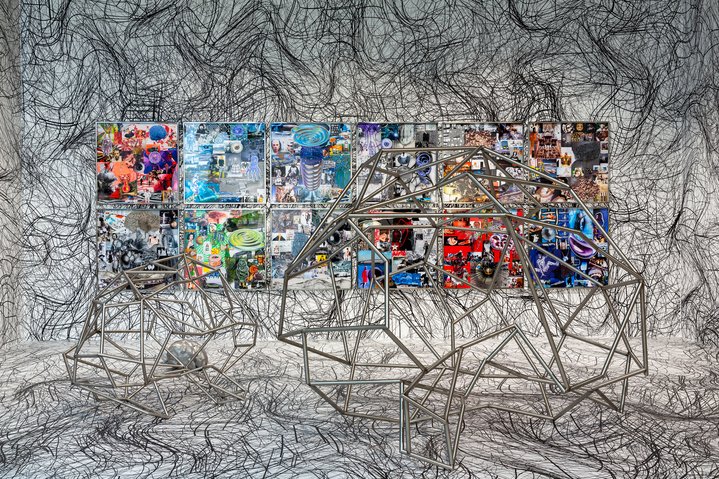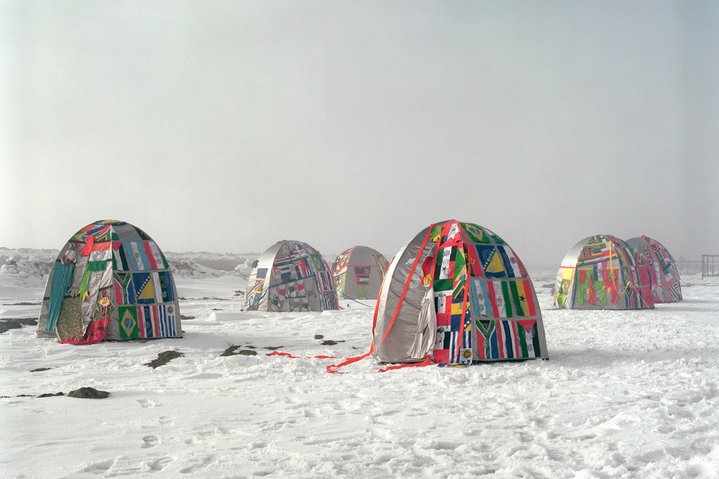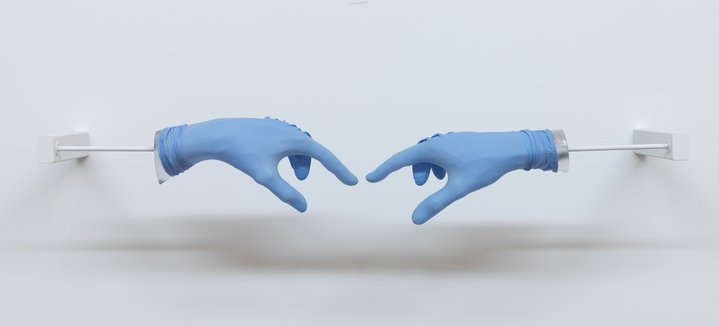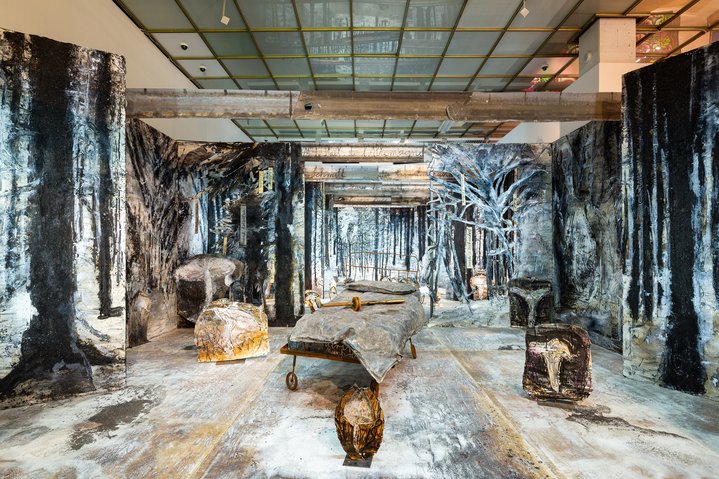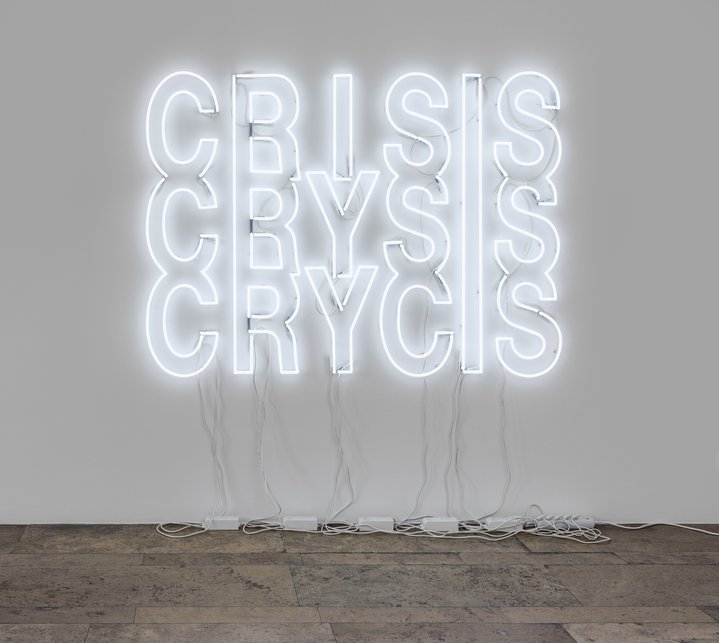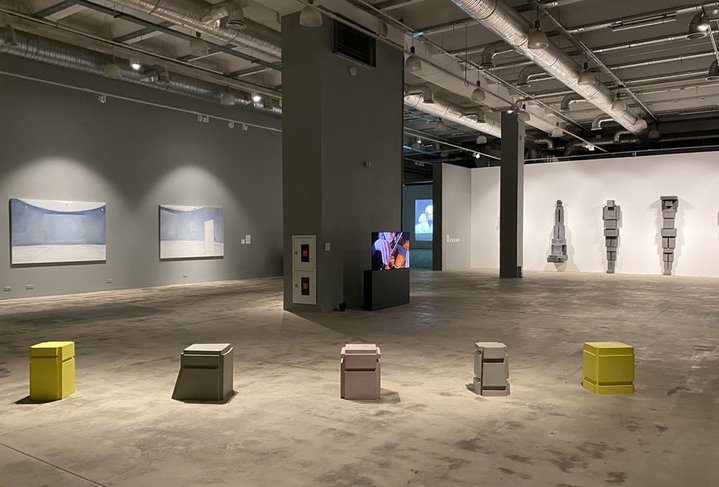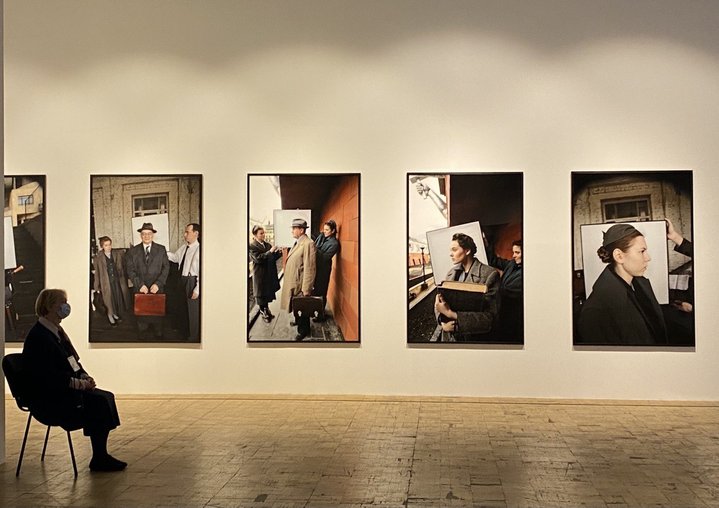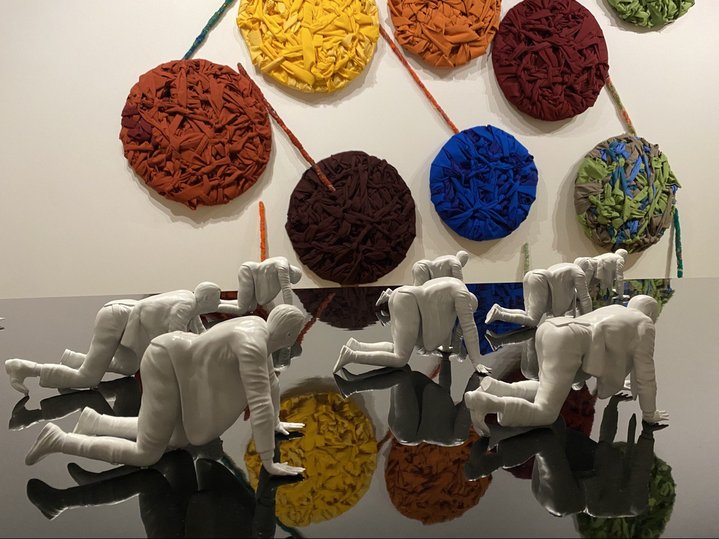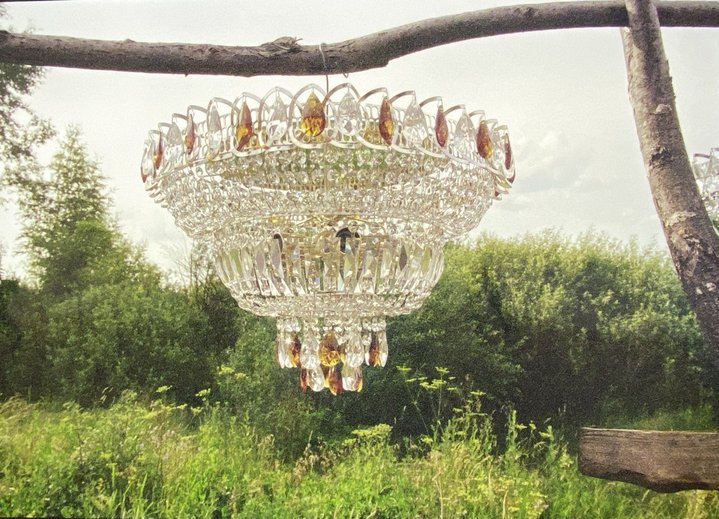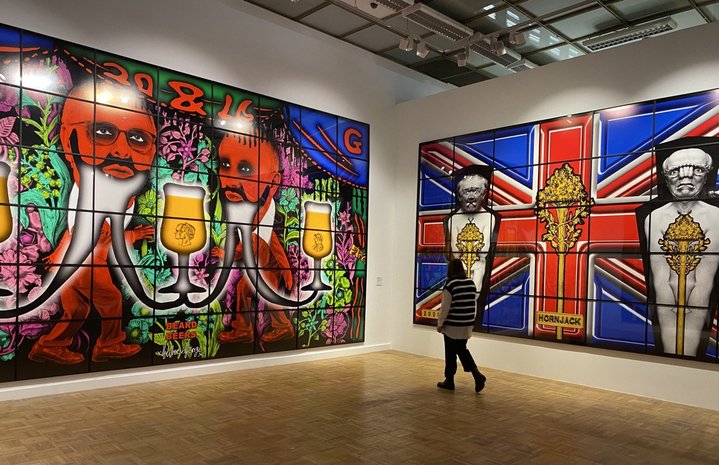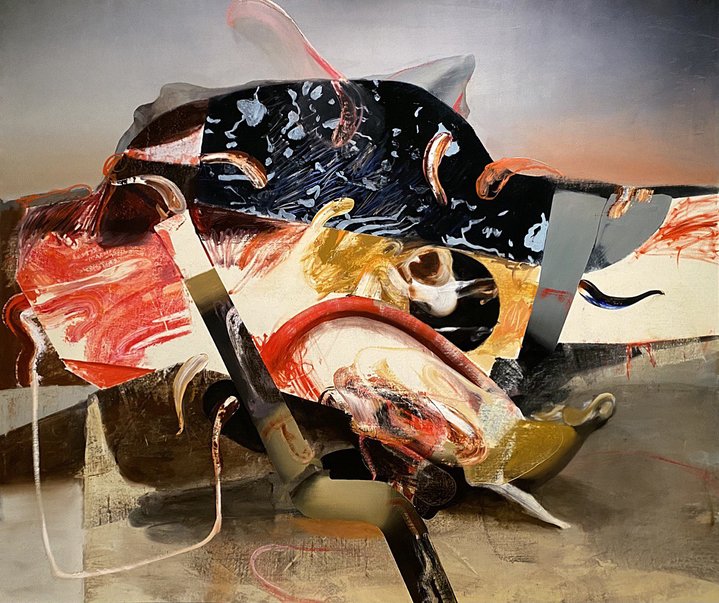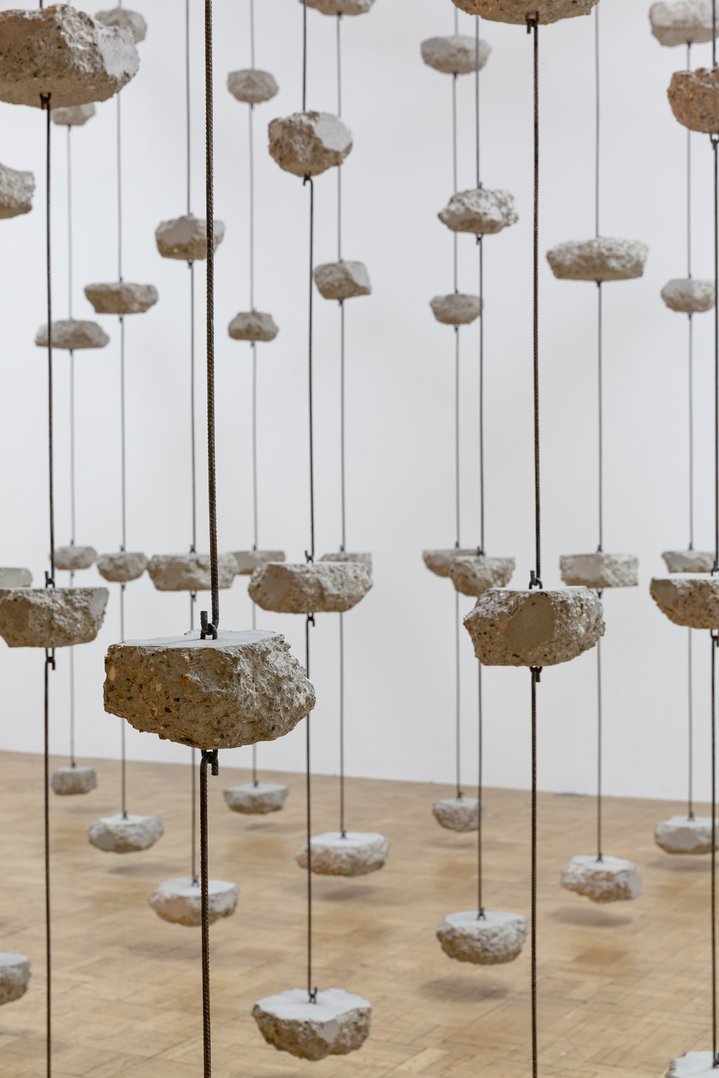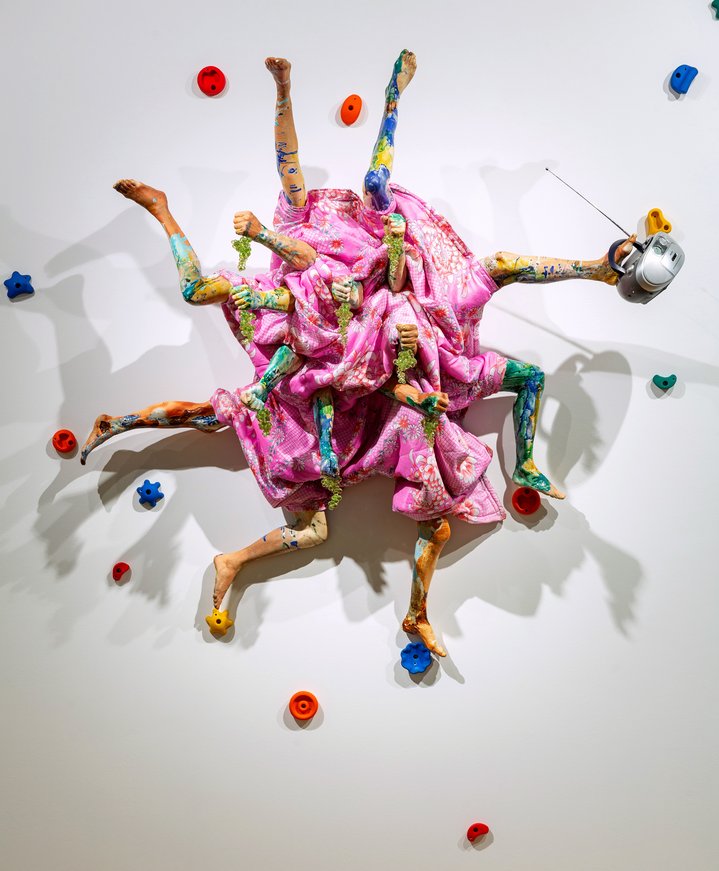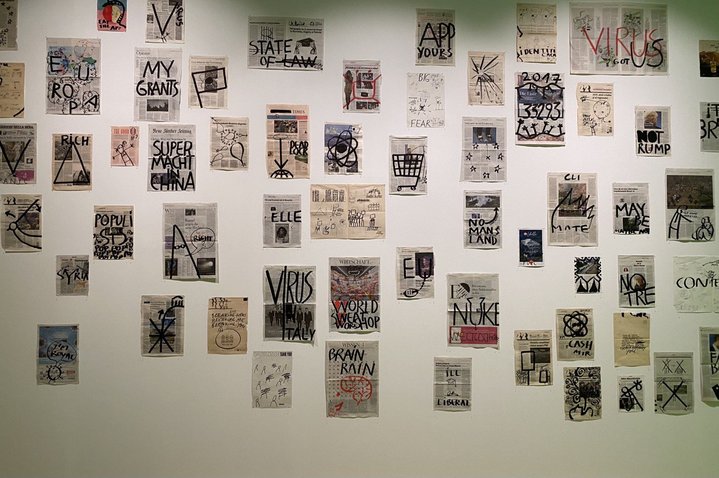Slavs and Tatars. Mystical Protest, 2011. Luminous paint, Muharram fabric, fluorescent lights, coloursleeves, cotton, 240×620×15 cm. Installation view at Ujazdowski Castle Centre for Contemporary Art, Warsaw, 2016. Photo Bartosz Górka
United by art
‘Diversity United, Contemporary European Art. Moscow, Berlin, Paris’, the blockbuster international art exhibition has opened in Moscow. It will tour all three capitals and presents a utopian vision of mutual support and co-operation in this age of closed borders.
There was a time when exhibitions bringing together works by artists from different countries in Europe revolved around espionage, resignations, censorship and fraud. The historic Paris-New York, Paris-Berlin, Paris-Moscow and Paris-Paris (1977--1981), shows conceived by Pontus Hultén, all had a bit of that. These (now) mythical curatorial experiences overcame these unfortunate circumstances and are considered cultural milestones and precursors of a new museology, the “total exhibition” as Germano Celant described it. What Pontus Hultén did was to mobilise all museum departments to work together on these temporary exhibitions – including even the library – and by displaying posters, films, documentation and artworks together in the same space, he blurred the boundaries between mainstream and popular art. They were ahead of their time. The Moscow-Paris, shown at the Pushkin State Museum of Fine Arts in Moscow in 1981, included Malevich’s coffin and a reconstruction of Tatlin’s Tower for the Third International, reflecting the beginnings of Glasnost before the West even knew anything about it.
The Iron Curtain fell long ago and with that also the walls of the art world governing international shows. A union arose in its place, a European one, but it seems that European diversity continues to provoke rejection from within. This is the raison d’etre behind ‘Diversity United. Contemporary European Art. Moscow. Berlin. Paris’, it is an effort to “highlight the importance of a united Europe during times of political uncertainty”, as the curatorial text points out. The title of the exhibition comes from one of the works included in the show, ‘Etre à nouveau. Diversity United’ (2020), by the recently deceased Christian Boltanski, an artist who reflects the social, identitarian and emotional changes in Europe through his biography and his work. These transformations accompany the works assembled in the Tretyakov Gallery, some of them, reflecting significant moments of recent art history: European landscapes by Gerhard Richter, the yellow corridor by Olafur Eliasson, Doormat II by Mona Hatoum, Winterreise by Anselm Kiefer, or Grid (Moria) by Richard Mosse. Among the Russians are the Kabakovs (Ilya, b. 1933 and Emilia, b. 1945), Ekaterina Muromtseva (b. 1990), the Blue Soup art collective and Irina Korina (b. 1977) whose great installation, Resort Spirit, is particularly noteworthy.
The show was conceived around themes such as “crisis & resistance”, “power & equality” or “landscapes & mindscapes”), however, in terms of balance, Diversity United is much more diverse than it is united. As the curatorial scheme was inverted, with first artists being chosen for inclusion and then the concept of union or connections came later, the narrative is weak and, at times, confusing. For the Russian leg, the more than ample 8,000 square meters of the former Nazi Tempelhof Airport in Berlin were restricted to just 3,000 at the Tretyakov Gallery. This constrained the works, pressurizing and forcing them into dialogues which just do not bear fruit, for example, putting together Marko Vuokola’s coloured paintings with Isaac Julien’s anti-racist tale does not work.
Looking at the achievements of the show, in addition to what is without a doubt an offering of great art by some of the best artists of our times, the high points are in some of the newly commissioned works, which relate meaningfully to the curators’ original approach. Some of them, such as newspapers drawn by Dan Perjovschi referring to the Covid health crisis - which delayed the opening of the show itself - or others, which summon collaboration with the viewer, such as Fernando Sánchez Castillo, whose work prompts the visitors to write down and share their thoughts on democracy in exchange for one of the 5,000 miniature figurines of August Landmesser with his arms crossed in the middle of the Nazi salute... Works like these stand out in an exhibition, which is otherwise more celebratory and complacent, rather than critical or analytical and whose emotional arc goes from the hopeful ‘Aurora’ (2020) by Blue Soup, to the shipwreck ‘The Last Stroke’ (2019) by Ilya & Emilia Kabakov. A scope that is too unfathomable.
Diversity United. Contemporary European Art. Moscow, Berlin, Paris
Moscow, Russia
November 23, 2021 – March 13, 2022






